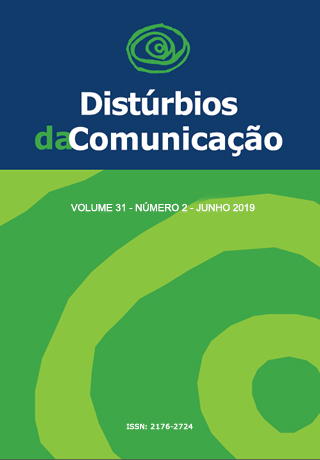Hearing trial in child education: association with health determinants
DOI:
https://doi.org/10.23925/2176-2724.2019v31i2p285-296Keywords:
Speech, Language and Hearing Sciences, Hearing, Social class, Health profile, Child, Preschool, Child rearing.Abstract
Objective: To describe the results of hearing screening in preschool children and verify association with socioeconomic aspects and health history. Methods: composite sample of 199 children. Data collection consisted of the application of a structured questionnaire of characterization of the Brazil Classification Criteria sample and the Transient Evoked Otoacoustic Emissions Exam. Results: The descriptive analysis of the participants’ profile revealed similarity between the sexes and mean age of four years and eight months. In the auditory profile, it was observed that the majority presented a “pass” result in the otoacoustic emissions exam. Although there was no statistically significant result, the association between the results of otoacoustic emissions and socioeconomic data showed that the classification of the level of schooling of the predominant head of household was illiterate/elementary school 1 incomplete, classified in the socioeconomic level D/E of the Brazil Economic Classification Criterion, most had a family grant and few children had a health plan. The analysis of the “failure” results of otoacoustic emissions and the health history also didn’t present significant result but revealed that of the children who presented this result, the majority of those in charge answered that the student listens well, went to the doctor less than 12 months ago, doesn’t use drugs and doesn’t perform any kind of treatment. Conclusion: Most children presented a “pass” result in otoacoustic emissions and there were no associations with statistical significance between school auditory screening, socioeconomic aspects and health history. Keywords:Downloads
Downloads
Published
Issue
Section
License
Copyright (c) 2019 Stella Gonçalves Pereira, Amanda de Jesus Alvarenga Carvalho, Andrezza Gonzalez Escarce, Julie Mary Mourão Alves, Lúcia Maria Horta Figueiredo Goulart, Stela Maris Aguiar Lemos

This work is licensed under a Creative Commons Attribution 4.0 International License.









